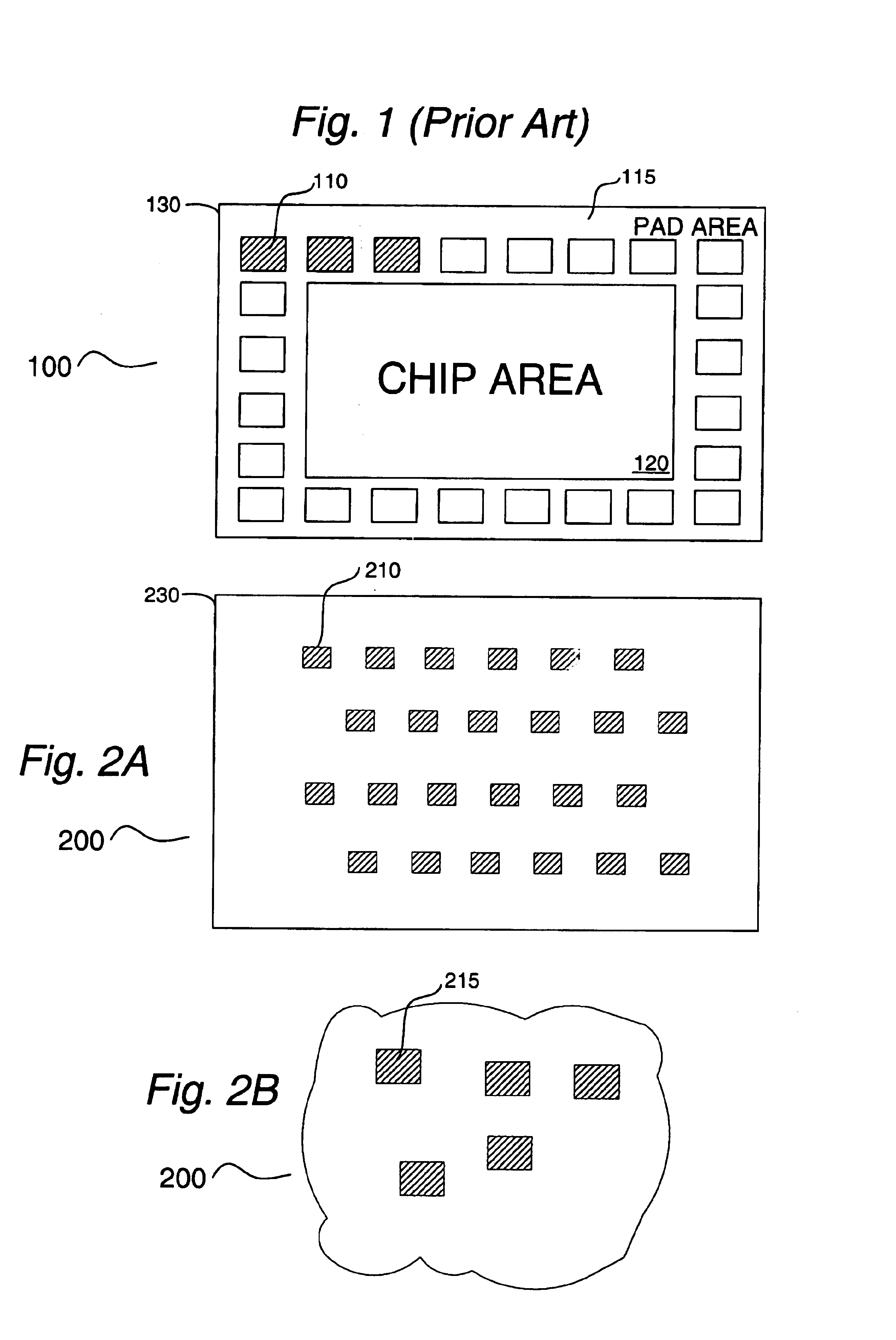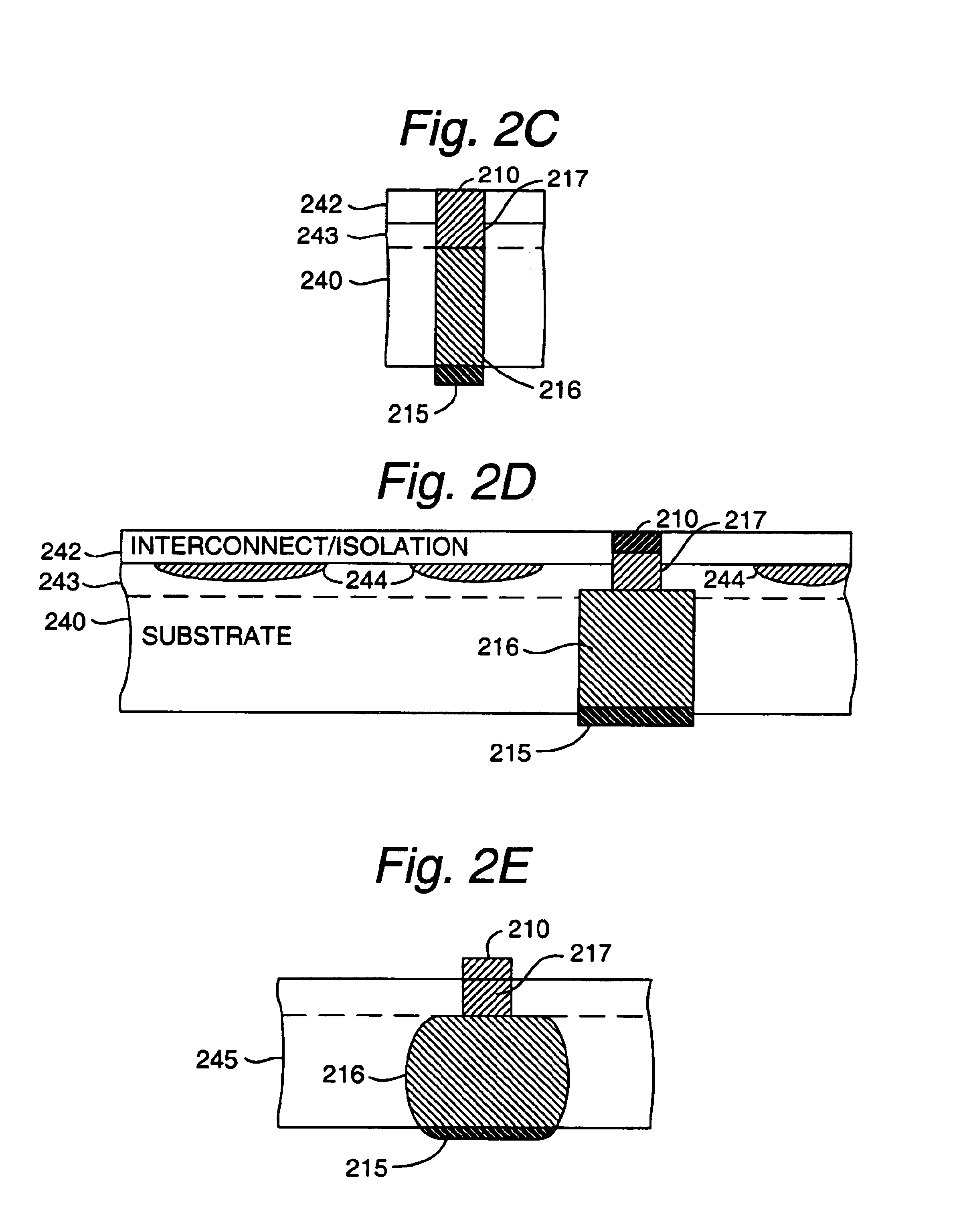Integrated circuit with improved interconnect structure and process for making same
a technology of integrated circuits and interconnects, applied in the direction of semiconductor devices, semiconductor/solid-state device details, electrical devices, etc., can solve the problems of limiting the size of the area that can become small using conventional processes, high processing costs, poor yield, etc., to reduce cycle time, reduce wafer cycle time, cost-effective
- Summary
- Abstract
- Description
- Claims
- Application Information
AI Technical Summary
Benefits of technology
Problems solved by technology
Method used
Image
Examples
second embodiment
A cross-sectional view of die 230 is illustrated in FIG. 2D. For ease of reference, like numerals refer to like structures from FIG. 2C above. The major difference in this case is of course the shape of via 205, which, in this case, is appropriately shaped to include differently sized top and bottom portions.
first embodiment
A third embodiment of an IC of the present invention is illustrated in FIG. 2E. The primary difference to the first embodiment is the fact that the bottom portion of via 205 is formed to be conical or hemispherically shaped. This structure has operational benefits and processing simplicities that may make it attractive for certain applications.
Other variations of shapes for via 205 will become apparent to those skilled in the art from the present disclosure, and the present invention is by no means limited to any particular implementation.
Examples of highly integrated electronic circuits formed in accordance with the present invention is illustrated in FIGS. 3A to 3D. In FIG. 3A, an embodiment of an IC in which both top side interconnects 310 and bottom side interconnects 350 is depicted. As mentioned earlier, such interconnects can include traditional bonding pads, bumps, tape automated bonding, and other conventional structures. A further embodiment shown in FIG. 3B includes bumps...
PUM
 Login to View More
Login to View More Abstract
Description
Claims
Application Information
 Login to View More
Login to View More - R&D
- Intellectual Property
- Life Sciences
- Materials
- Tech Scout
- Unparalleled Data Quality
- Higher Quality Content
- 60% Fewer Hallucinations
Browse by: Latest US Patents, China's latest patents, Technical Efficacy Thesaurus, Application Domain, Technology Topic, Popular Technical Reports.
© 2025 PatSnap. All rights reserved.Legal|Privacy policy|Modern Slavery Act Transparency Statement|Sitemap|About US| Contact US: help@patsnap.com



